This is the best way to make yalanji dolmas—flavorful, tangy, and tender, just like my Syrian grandmother taught me. Most Levantine Arabic-speaking countries like to call these delicious vegetarian stuffed grape leaves “yalanji,” but whether you call them dolmas, dolmades, or warak enab, there is no denying they are one of the tastiest traditional Mediterranean delicacies!
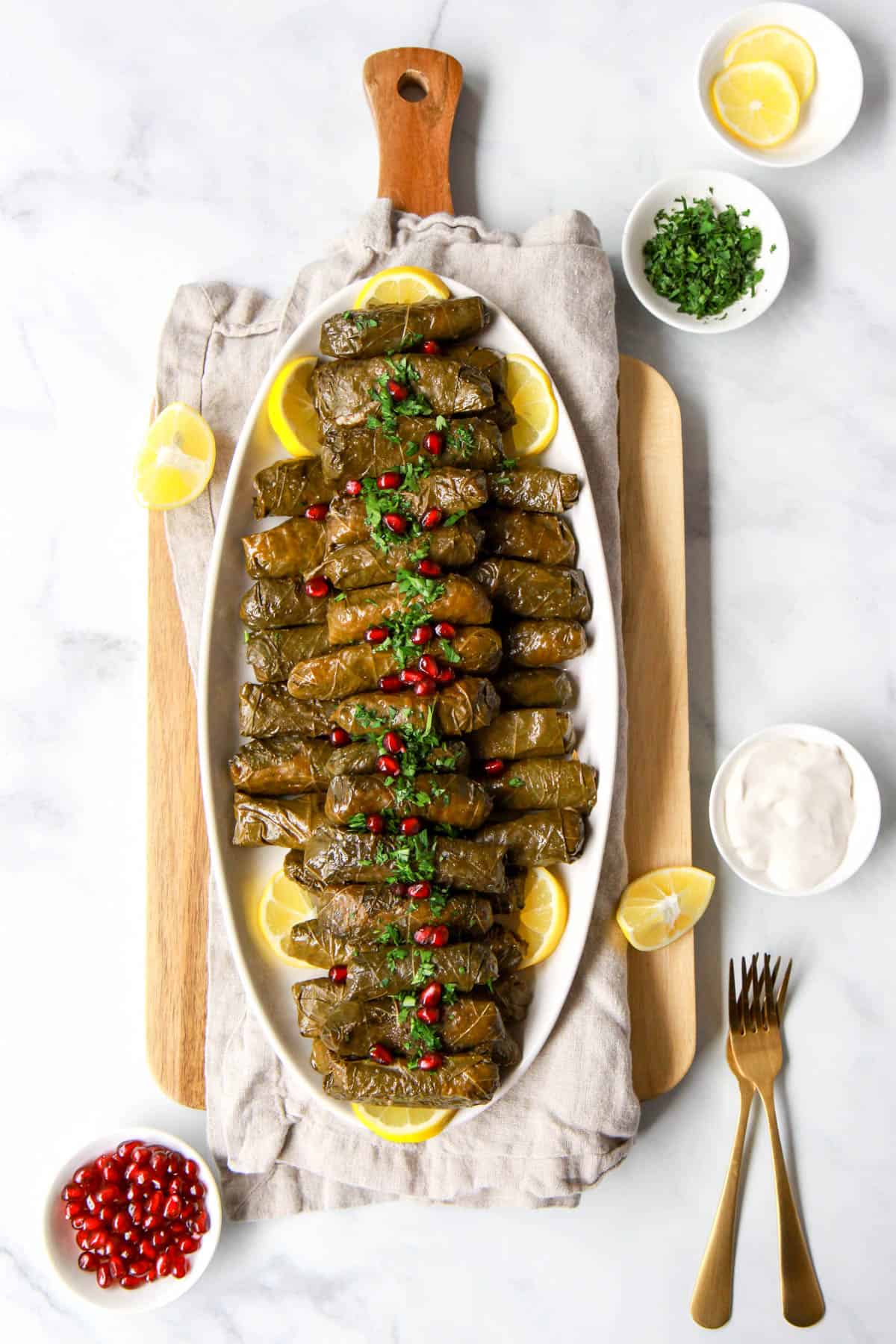
Jump to:
What is Yalanji?
If you’re wondering what yalanji means, it’s derived from Turkish, meaning “liar,” playfully referencing the absence of meat in this vegetarian version of stuffed grape leaves. Unlike the version with meat, these grape leaves are stuffed with a tangy herb, tomato, and rice filling.
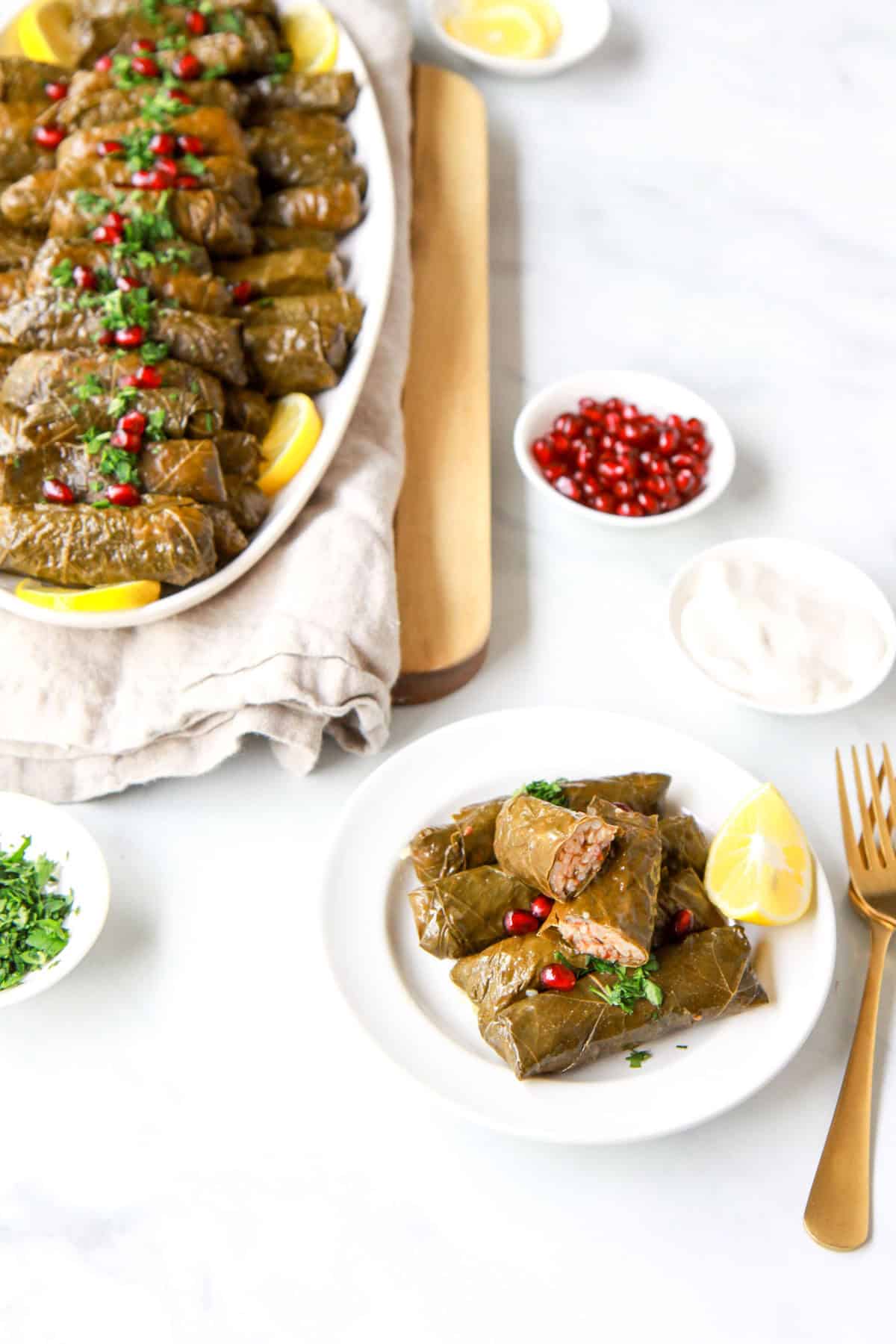
Yalanji is traditionally vegan, like many authentic Arabic recipes. Best served cold, they taste even better the next day as the flavors intensify.
While Syrians refer to this dish as yalanji, across the Levant and the Mediterranean it goes by many names, including wara2 3nab, which means grape leaves in Arabic, dolmas, and dolmades. In Arabic, these meatless stuffed grape leaves are further described as warak enab bi zeit, as "bi zeit" translates to "in olive oil,” referring to meatless preparations of Arabic dishes that are cooked with olive oil and can be served warm or cold.
As a child, I avoided stuffed grape leaves, scared by their unfamiliar appearance. The small, green, rolled cigars seemed odd to me, but once my mom convinced me to try one, I was hooked. I love sour, zesty flavors, and I was mesmerized by the fluffy rice that had soaked up the delicious lemon and tomato juices.
Each bite takes me back to warm childhood memories in the Middle East. Although rolling these meatless stuffed grape leaves can be time-consuming, it’s a labor of love that pays off in every delicious bite. Food always tells a story, and I have so many wonderful memories with my family and friends, in the States and in the Middle East, surrounding a delicious plate of stuffed grape leaves.
Ingredients
Yalanji ingredients consist of simple components that come together to create a tangy, flavorful dish. Here are some notes on what to use to ensure your vegan dolmas come out perfectly.
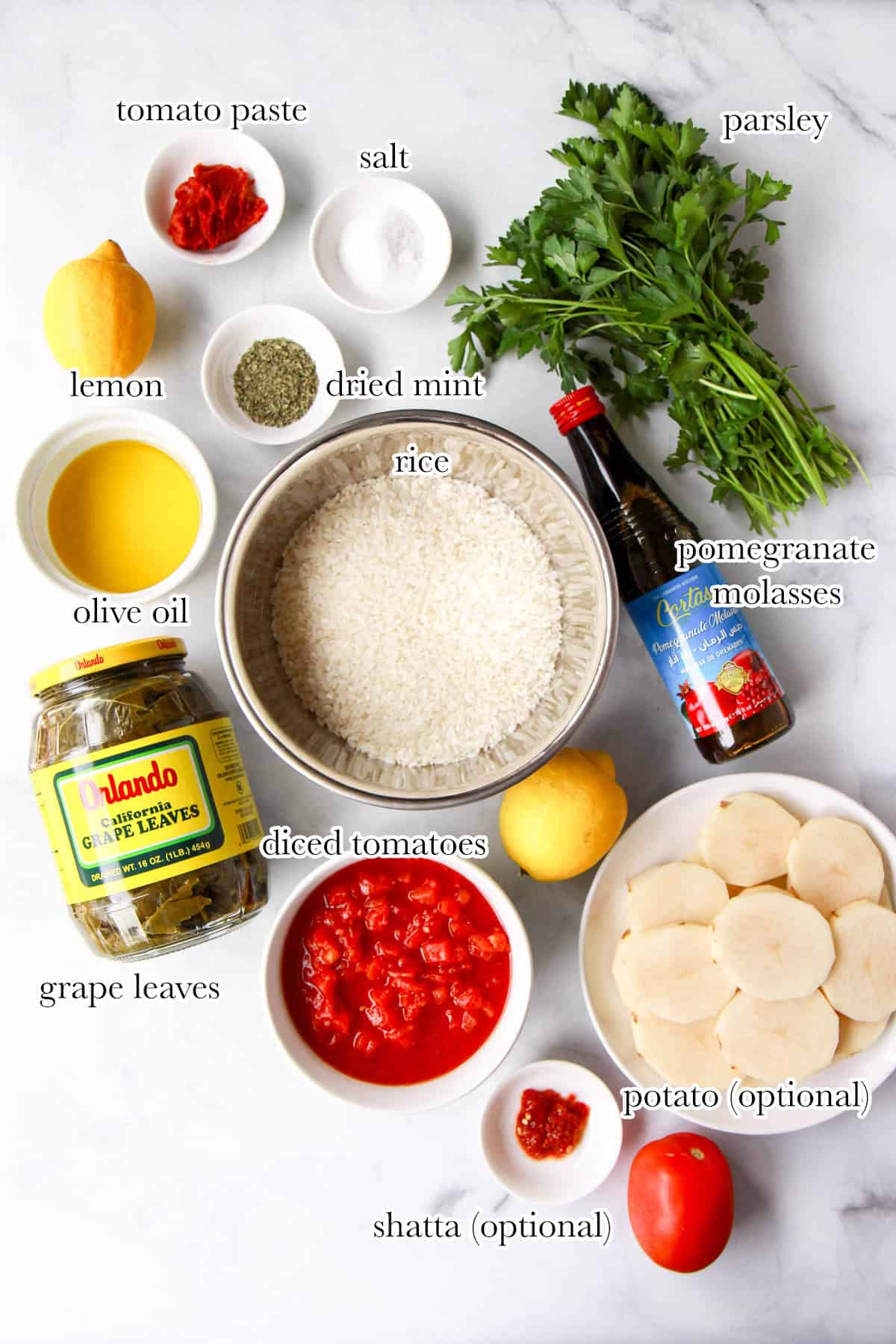
Grape leaves
Jarred grape leaves are a convenient option, and I personally prefer the Orlando brand for their consistently intact leaves. Be sure to rinse off the brine thoroughly and soften the leaves in boiling water before use.
If you have access to fresh grape leaves, boil them for a few minutes in salty water to achieve the same texture to use for this dish.
Medium-grain rice
The base of the filling, this rice absorbs the tangy juices of the lemon, tomatoes, and olive oil. If medium-grain rice is unavailable, short-grain rice works wonderfully as a substitute.
Fresh parsley and dried mint
Italian flat-leaf parsley works best. These herbs add a delicious freshness and flavor.
Tomatoes and tomato paste
Diced tomatoes add juiciness, while the paste enhances their flavor and adds some tartness.
Pomegranate molasses
While slightly sweet, pomegranate molasses adds a tangy, tart, and sour flavor, complementing the lemon juice. This ingredient is a staple in Syrian cuisine.
Lemon juice and extra virgin olive oil
Olive oil and lemon juice create the signature tangy, juicy filling and yummy broth that surrounds the grape leaves while cooking.
Optional garnishes
You can use slices of potatoes, tomatoes, and lemons to line the pot, to soak up the flavorful juices while helping prevent sticking.
See the recipe card below for exact measurements.
How to make stuffed grape leaves
Making yalanji is an art, but with a little practice, you’ll be rolling like a pro. This yalanji recipe was lovingly passed down from my Syrian grandma (teta), who taught me to roll these stuffed grape leaves the traditional Syrian way—thin and firm.
I’ve put together some helpful photos to assist you in rolling the perfect wara2 3enab!
Prepping the grape leaves
Begin by rinsing the grape leaves thoroughly to remove excess brine. Blanch them in boiling water for a minute to soften, then drain and set aside.
Mixing the filling
In a large bowl, combine the uncooked rice, diced tomatoes, parsley, dried mint, and tomato paste. Drizzle in the olive oil, pomegranate molasses, and lemon juice. Stir until evenly mixed.
How to roll grape leaves
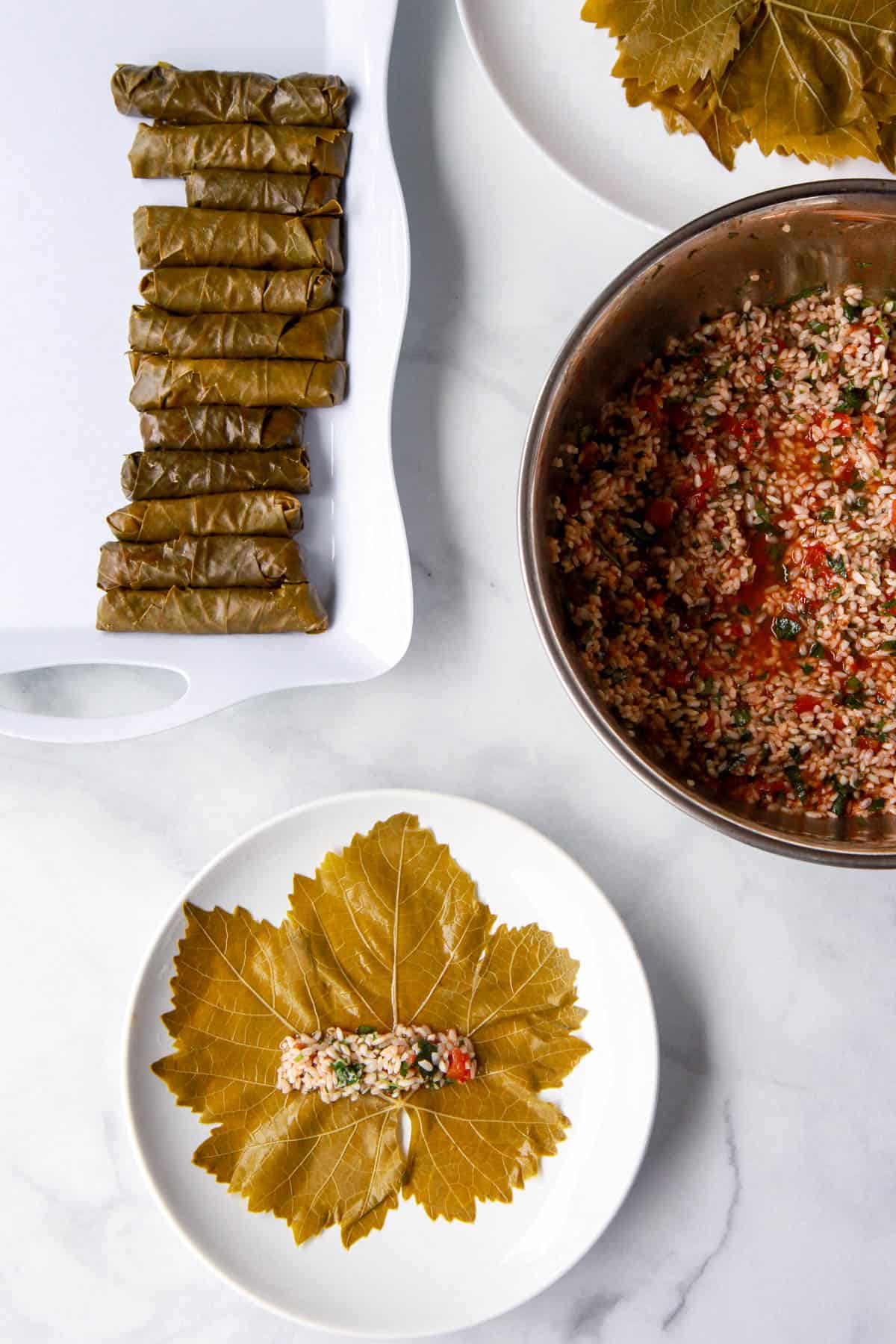
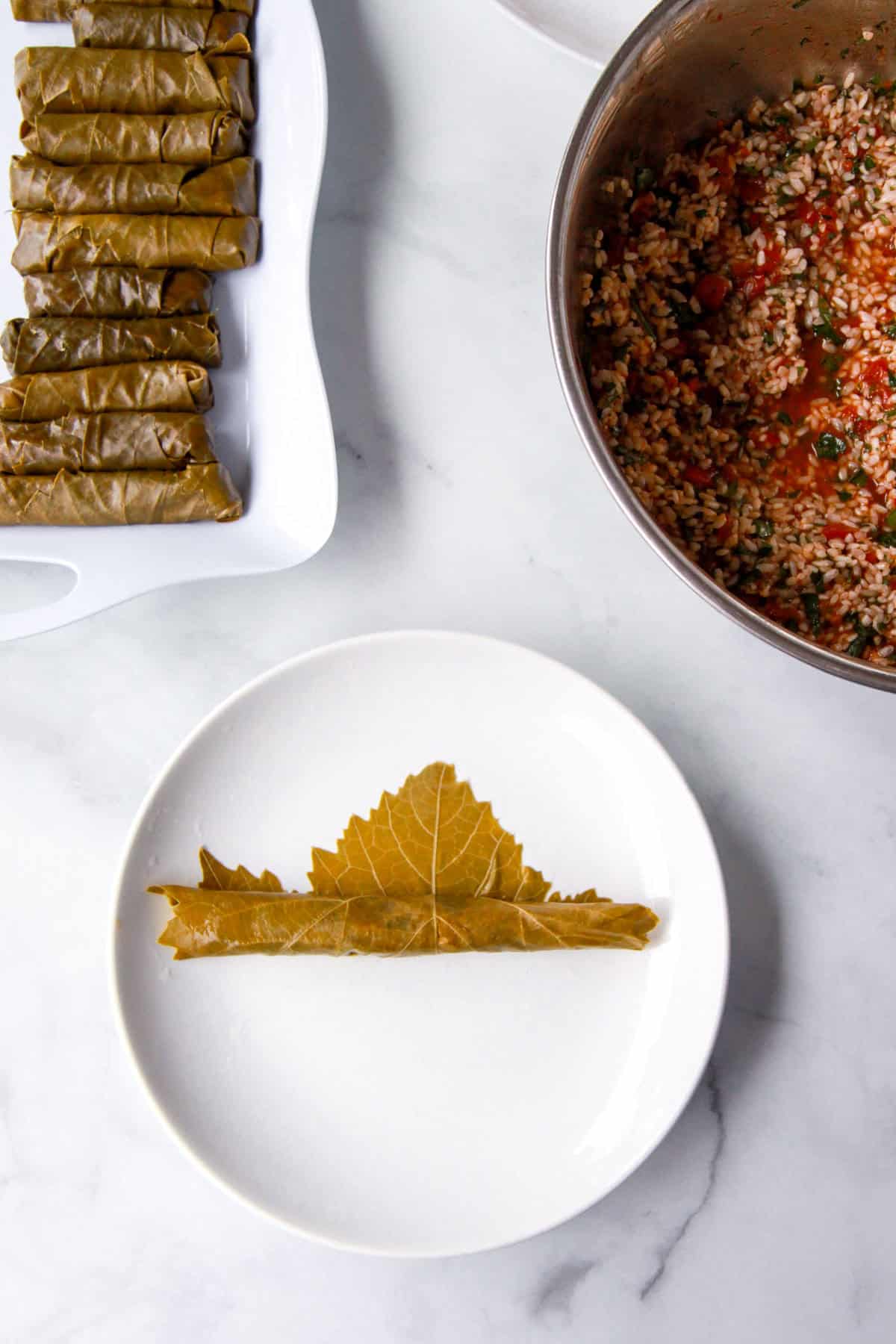
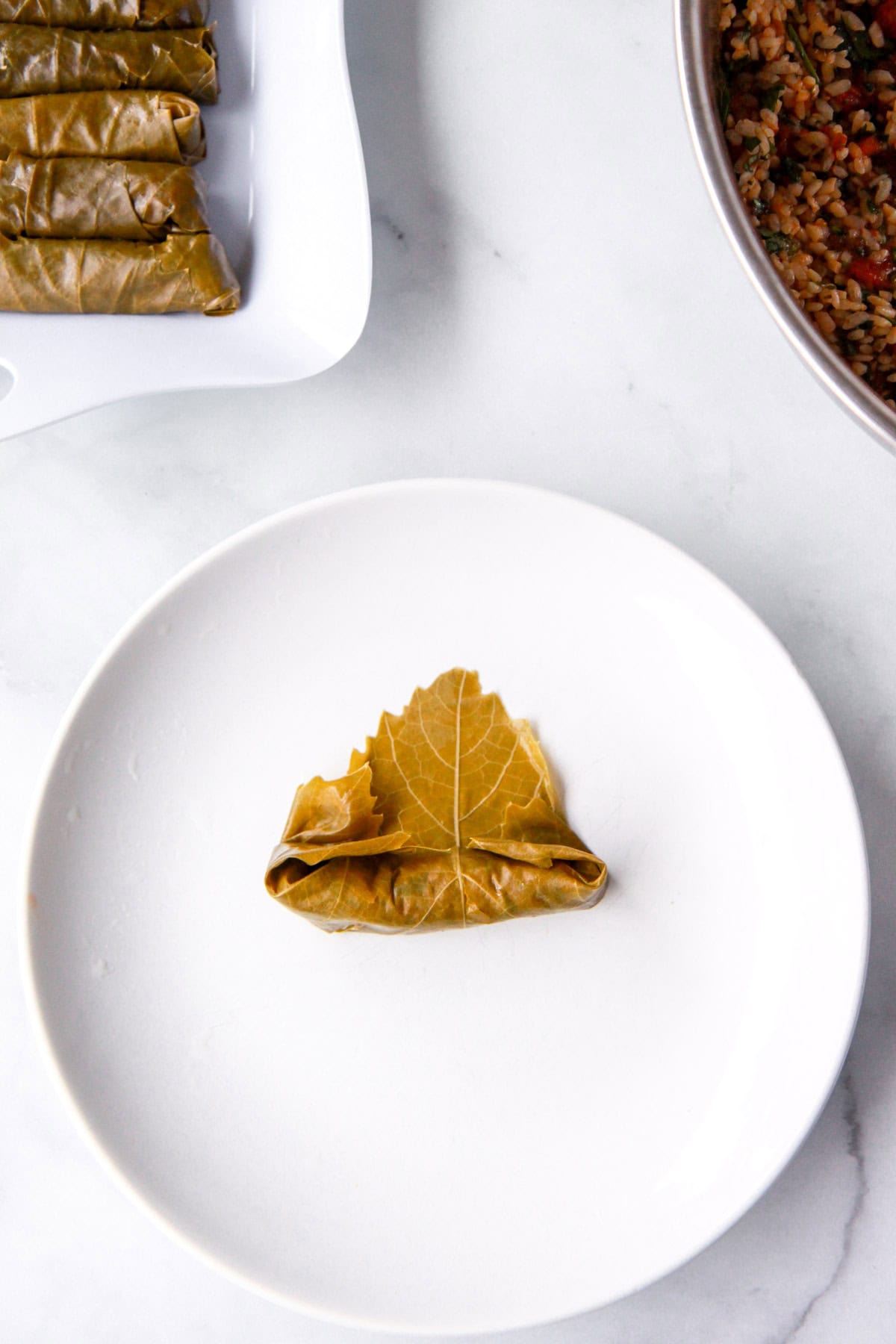
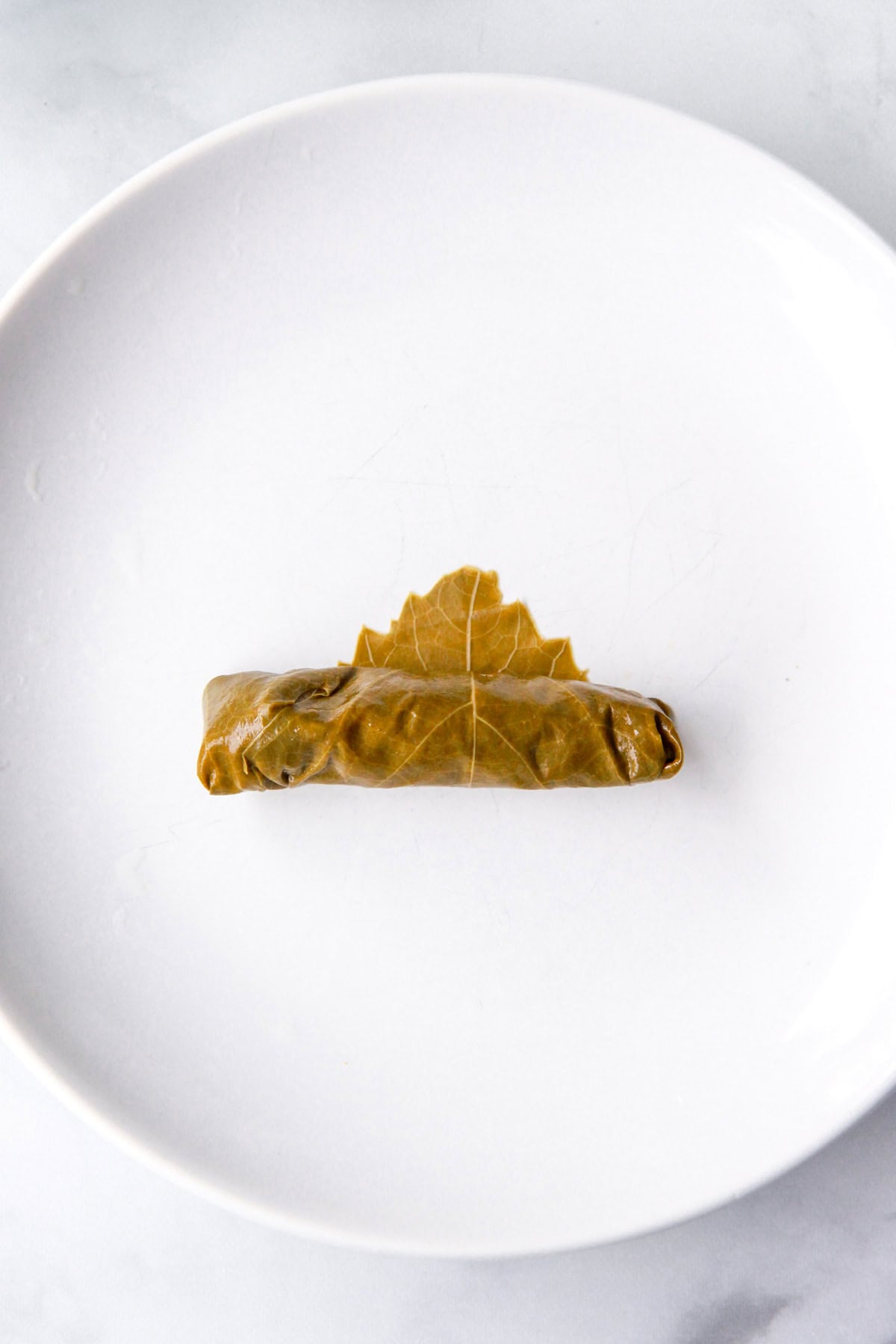
Remove the stem of the grape leaf. Place a grape leaf veiny side up. Add a spoonful of the rice filling about a centimeter from the base of the leaf, shaping it into a small, firm log.
Fold the bottom of the leaf over the filling, tuck in the sides, and roll tightly, leaving just enough room for the rice to expand while cooking. Continue to tuck in the sides of the leaf over the filling as you roll the leaf up.
Continue rolling grape leaves until all the filling is used, and with practice, you’ll be rolling them like my grandma in no time!
Arranging in the pot
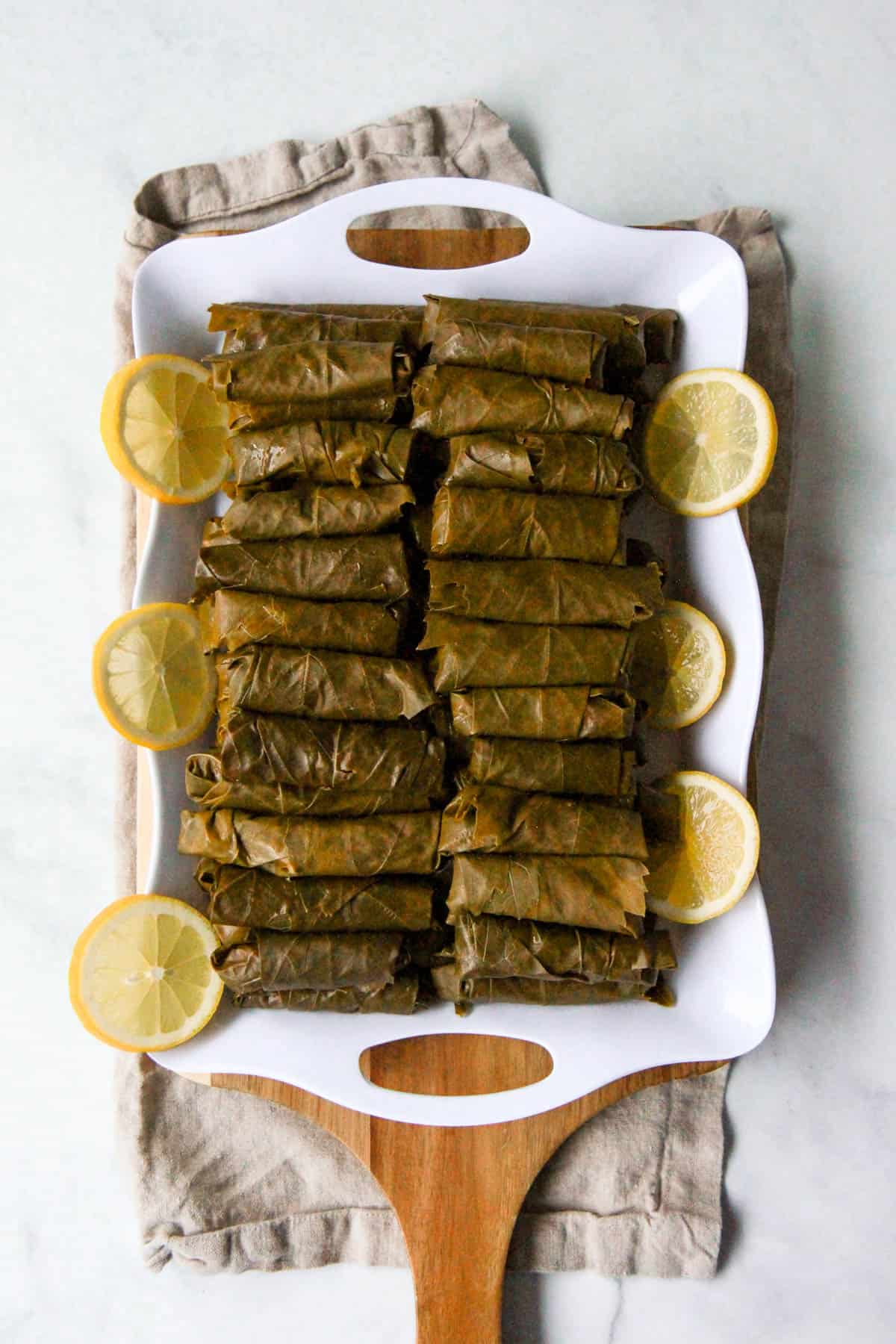
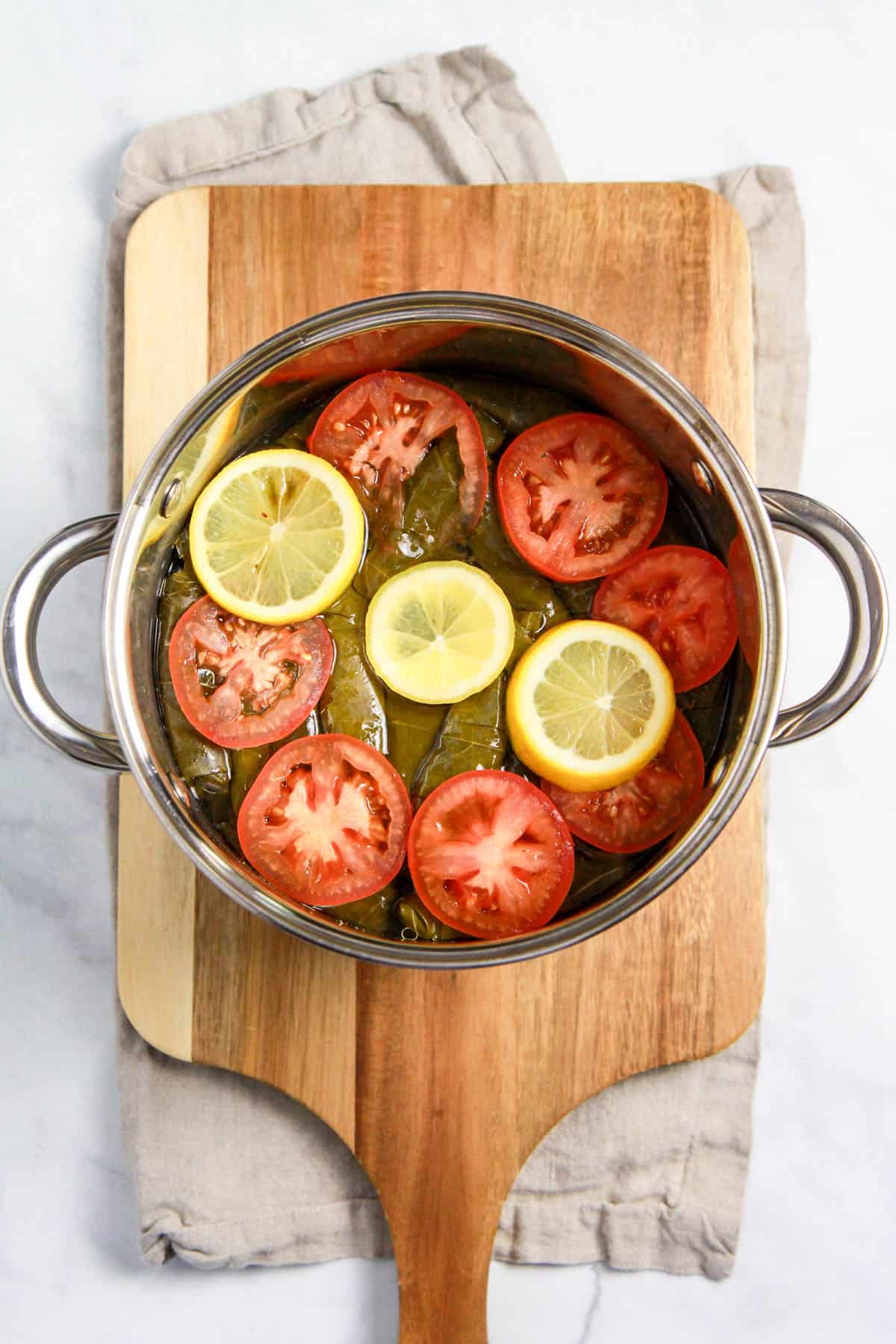
Line the bottom of a large pot or pressure cooker with potato, tomato, and lemon slices, or leftover grape leaves to prevent sticking. Arrange the vegan stuffed grape leaves in snug layers, creating a circular pattern.
Place a plate on top to keep them submerged during cooking. You may need to weight the plate down with something like a stone to keep it from floating.
Cooking the yalanji
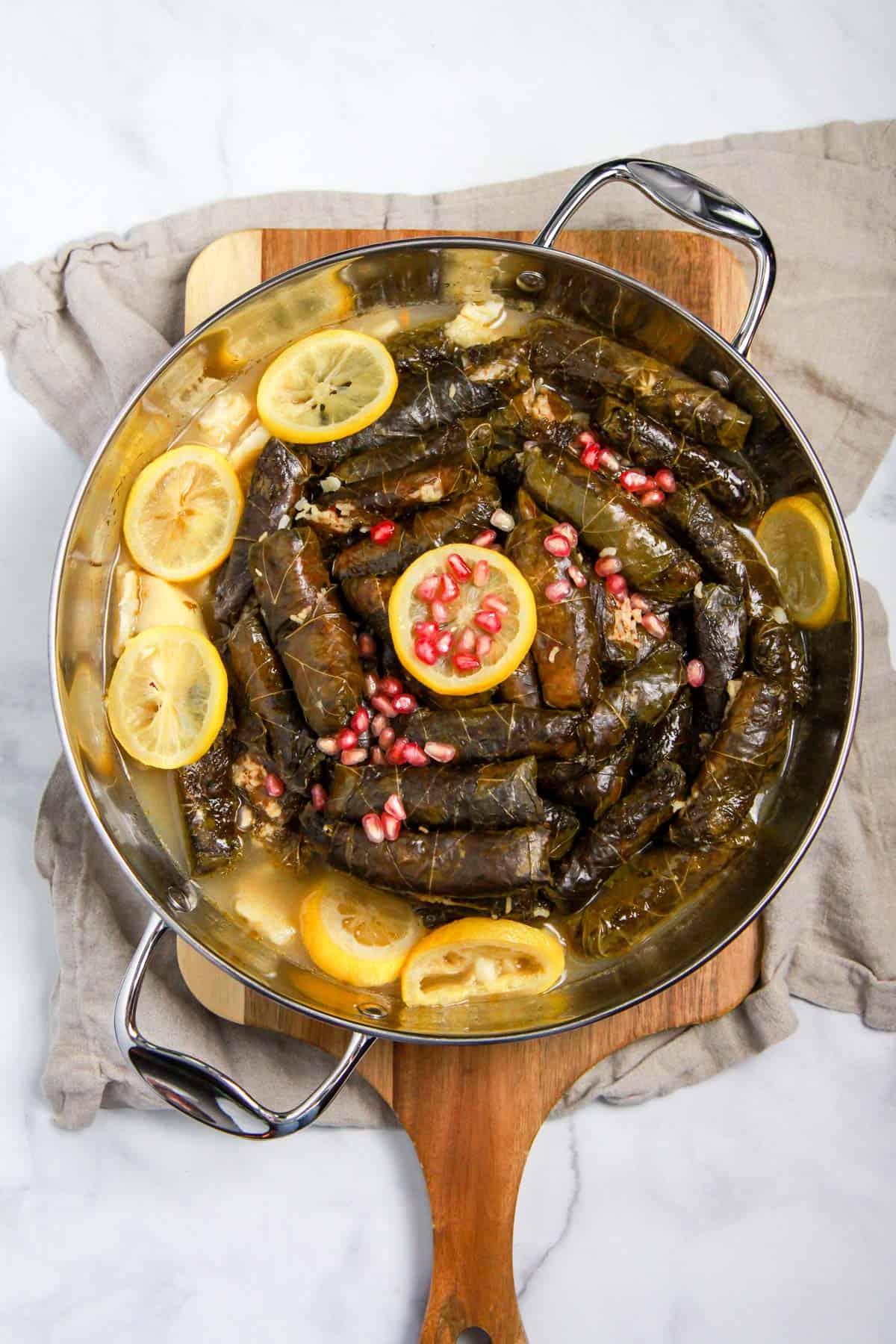
Add water, lemon juice, and some more olive oil and pomegranate molasses to the pot, ensuring the rolls are fully covered.
If using a pressure cooker, cook on high until it whistles, then reduce to medium and simmer for 12 minutes. For a regular pot, bring to a boil, reduce to low, and simmer for 60-90 minutes. Allow the yalanji dolma to cool slightly before flipping onto a serving dish.
Hint: To prevent the grape leaves from drying out while rolling, cover unused leaves with a damp towel or paper towel as you work. This will make them easier to handle and ensure a smooth rolling process.
Expert tips
Follow these tips to make sure you get perfect yalanji every time.
- Remove the stems: They can be tough and add bitterness.
- Rinse the leaves: Wash the jarred grape leaves thoroughly to remove the brine, then blanch the rinsed leaves in boiling water for a minute to soften before use.
- Don’t overfill: Allow enough space for the rice to expand during cooking, and ensure you roll the leaves snugly but not overly tight to prevent them from bursting.
- Line the pot: Use some olive oil along with potato, lemon, and tomato slices to enhance flavor and prevent sticking. You can also use leftover or torn grape leaves.
- Weight them down: Place a plate on top of the rolls to keep them submerged and intact.
- Rest before serving: Allow resting time before flipping the pot to serve.
- Pressure cooker: A pressure cooker will cook the yalanji in a fraction of the time, but a large pot works just as well.
FAQs
The grape leaves should be tender, and the filling should be fully cooked. Taste one to check for doneness.
Let the yalanji cool down completely before packing them into an airtight container for the fridge. They will keep for a week in the fridge. The flavors and texture will get even better as time goes on.
You can eat and serve them cold, straight from the fridge or leave them outside a little bit before serving.
Yes! Freeze for up to three months. Thaw overnight in the refrigerator before serving.
Absolutely! They’re packed with wholesome ingredients like rice, olive oil, tomatoes, and fresh herbs, making them a nutritious Mediterranean dish.
Variations
In Syria, we also use the term yalanji to refer to other vegetables stuffed with the same vegetarian rice filling. Try hollowing and stuffing zucchinis, squash, eggplant, red peppers, or tomatoes! Each variation offers a unique take on this classic recipe, perfect for mixing things up.
What to serve with stuffed grape leaves
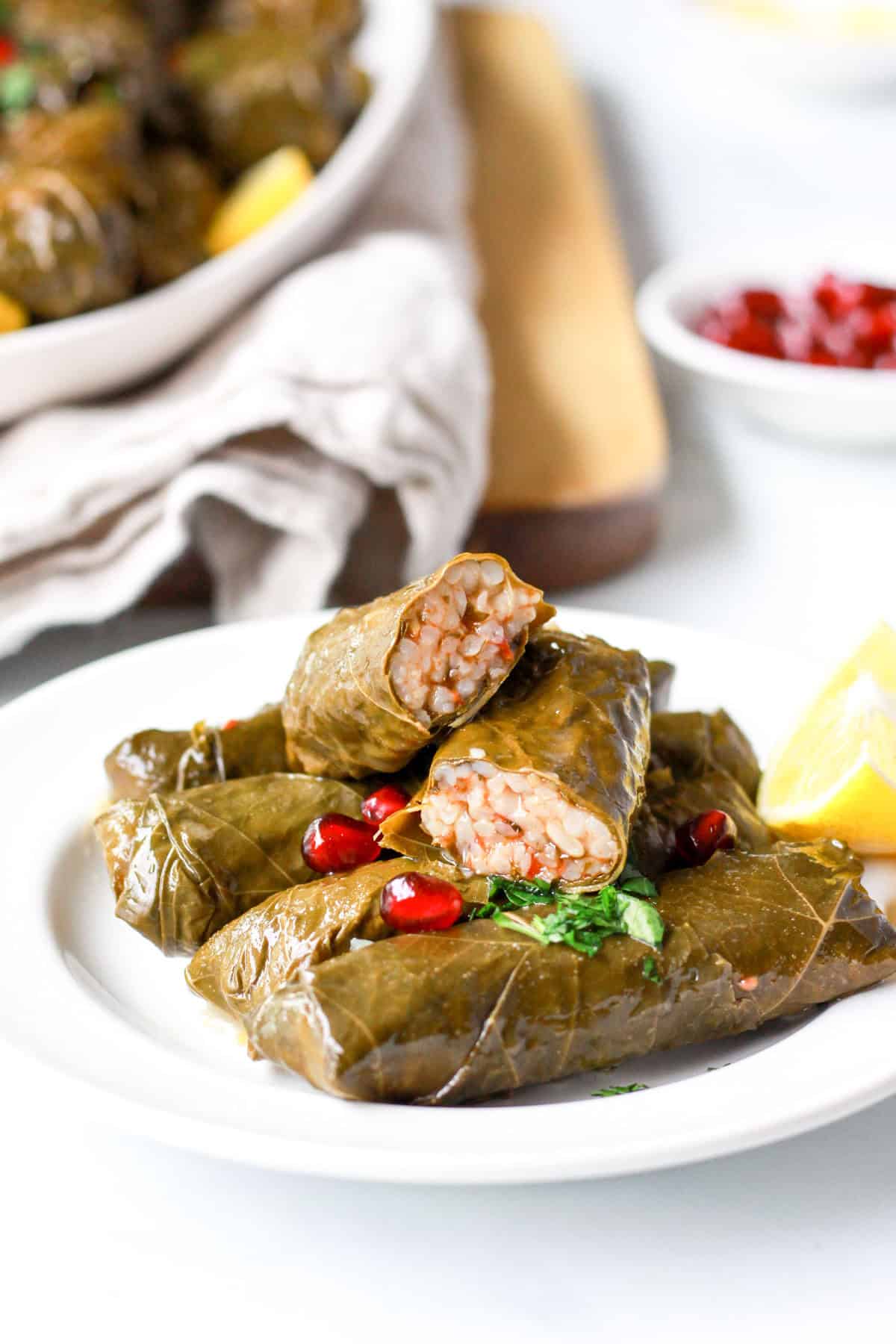
This dolmas recipe pairs wonderfully with other vegan Middle Eastern recipes, like:
- Palestinian Salad: A vibrant mix of chopped tomatoes, cucumbers, and parsley, this refreshing side perfectly complements yalanji served as a main dish.
- Syrian Moussaka: This hearty casserole of eggplant, potatoes, and chickpeas pairs beautifully with this vegan dolmades recipe as a flavorful appetizer.
- Mediterranean White Bean Soup: This comforting, nourishing soup transforms yalanji into a satisfying, complete meal.
You can also serve yalanji alongside some yogurt, whether regular or non-dairy, as a creamy, tangy dip.
Yalanji is one of my all-time favorite dishes, not just for its taste but for the memories it brings. I am so grateful that my wonderful teta passed down this recipe to me.
I hope you’ll try this recipe and fall in love with it as much as I have. Don’t forget to comment below and share your recreations on Instagram @zenandzaatar. Happy rolling!
Recipe
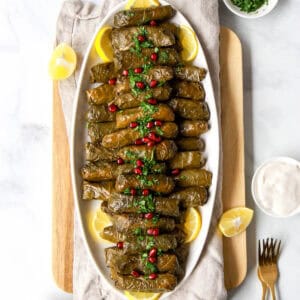
Syrian Yalanji Dolma (Vegan Stuffed Grape Leaves)
Equipment
Ingredients
- 1 16 oz./ 1 lb. jar grape leaves*
- 2 tablespoon lemon juice (juice of half a lemon)
- 3 tablespoon extra virgin olive oil, divided
- 1 tablespoon pomegranate molasses
- 1 potato, sliced (optional)
- 1 tomato, sliced (optional)
- 1 lemon, sliced (optional)
Filling
- 3¼ cups medium grain rice
- 2 teaspoon salt
- 1 15 oz. jar finely diced tomatoes (or 2 large tomatoes, peeled and finely diced)
- 1 bunch flat-leaf parsley
- 2 teaspoon dried mint
- 1 tablespoon tomato paste
- 1 teaspoon shatta** (optional)
- 2 tablespoon pomegranate molasses (or more lemon juice)
- 3 tablespoon lemon juice (juice of 1 lemon)
- 6 tablespoon extra virgin olive oil
Instructions
- First, prep the grape leaves. Rinse the grape leaves thoroughly in a strainer, to remove brine. Put grape leaves in a large pot and cover them with water, at least an inch over the grape leaves. Bring the pot to a boil, and boil the grape leaves for 1 minute. The grape leaves should be more tender. Drain and set them aside.
- Prepare the filling. Remove the stems of the parsley, and chop the parsley leaves finely. Combine uncooked rice with salt, diced tomatoes, chopped parsley, mint, tomato paste, and shatta, and mix together in a large bowl. Pour the pomegranate molasses, lemon juice, and olive oil over the rice mixture and mix thoroughly.
- Now, roll the stuffed grape leaves. Cut off the stems of all the grape leaves. Place a spoonful of the rice filling about one centimeter from the base of the grape leaf, and shape it into a small log. The amount of filling should vary depending on the size of the grape leaf. Place the filling on the veiny side of the leaf, so the outside will be smooth. Fold the bottom over the filling, tuck in the sides, and roll tightly, leaving room for rice to expand. Set aside. Repeat for all grape leaves.
- If you have any leftover filling after filling the grape leaves, you can stuff tomatoes, bell peppers, or any other small vegetable with the filling, and cook them with the grape leaves.
- Drizzle 1½ tablespoons of olive oil at the bottom of a pressure cooker or pot. If desired, add thinly sliced tomato, potato, and lemon to line the bottom of the pot. Otherwise, line the pot with leftover or torn grape leaves. Reserve a few tomato and lemon slices to place on top later.
- Then, begin filling the pot with the stuffed grape leaves, packing them tightly in a circular fashion. If you have any gaps, you can stuff them with the extra stuffed vegetables (if you ended up with any).
- Once all the grape leaves are in the pot, cover them with a plate that is close to the diameter of the pressure cooker or pot, to stop the grape leaves from floating to the top. Pour 5½ cups of boiling water over the grape leaves. Add the juice of half a lemon, the remaining 1.5 tablespoon olive oil, and the tablespoon of pomegranate molasses to the liquid.
- Cook on high heat in a pressure cooker until it whistles, then reduce to medium and simmer for 12 minutes. For a regular pot, boil, reduce to low, and simmer for 60-90 minutes.***
- Check if the plate and leaves have cooled enough to handle. Allow to cool slightly before flipping onto a large serving plate. Slide out the plate from under the grape leaves, and rearrange them if needed.
- This dish is best served cool, so if desired, refrigerate to cool, or wait at least 30 minutes before serving. Garnish with pomegranate seeds and chopped parsley or mint leaves, if desired. Serve with regular or non-dairy yogurt, or simply eat them on their own. Enjoy!
Notes


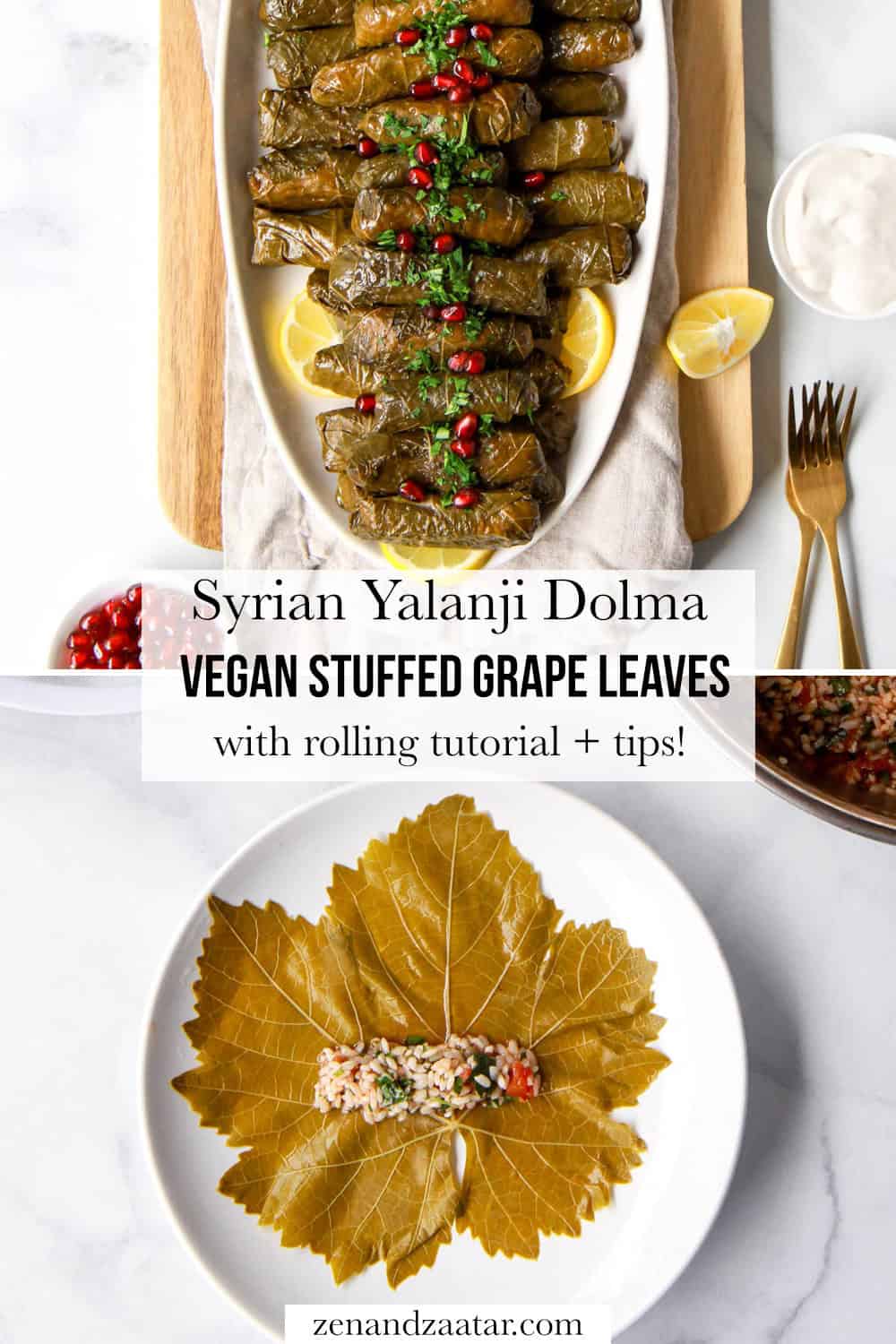
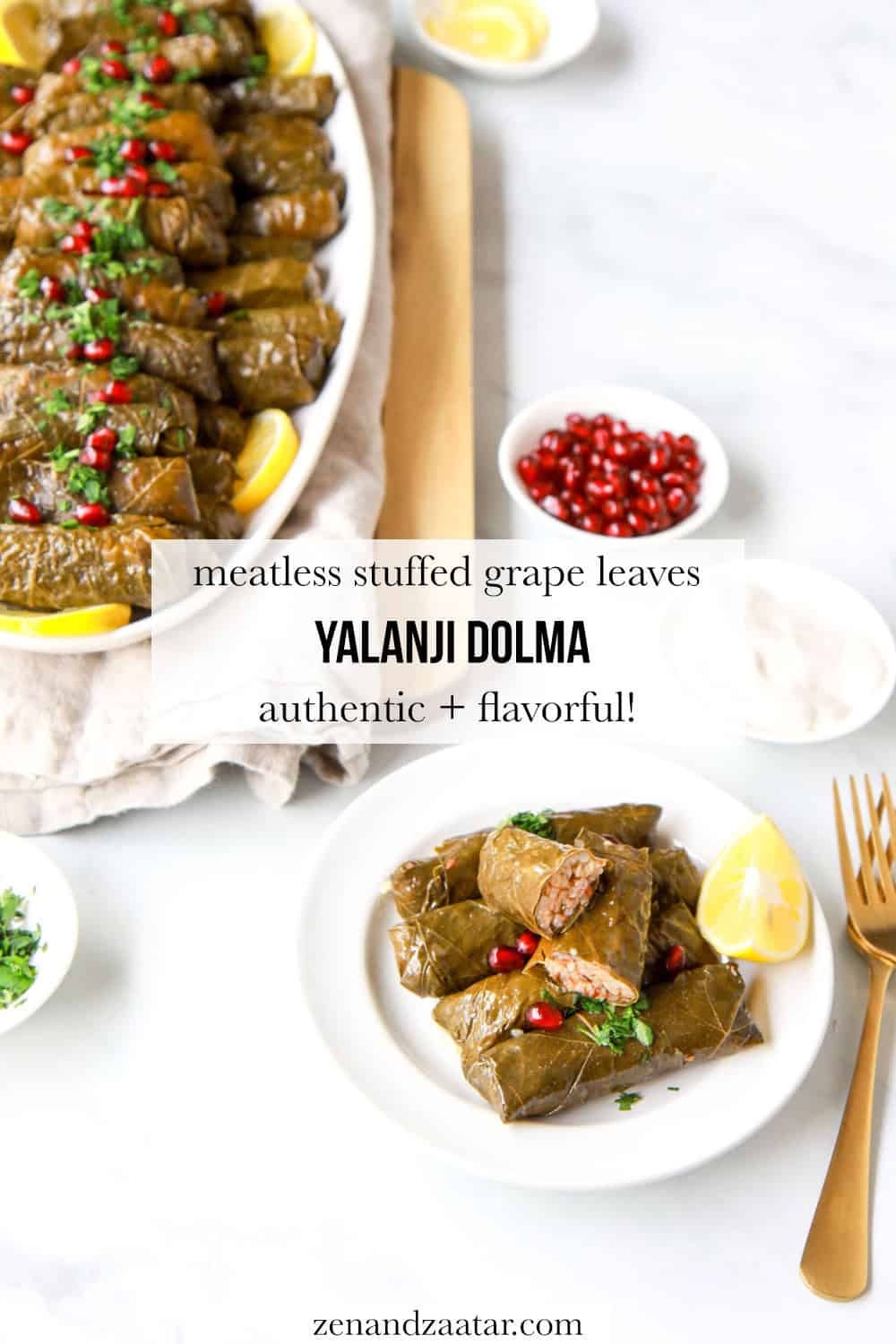
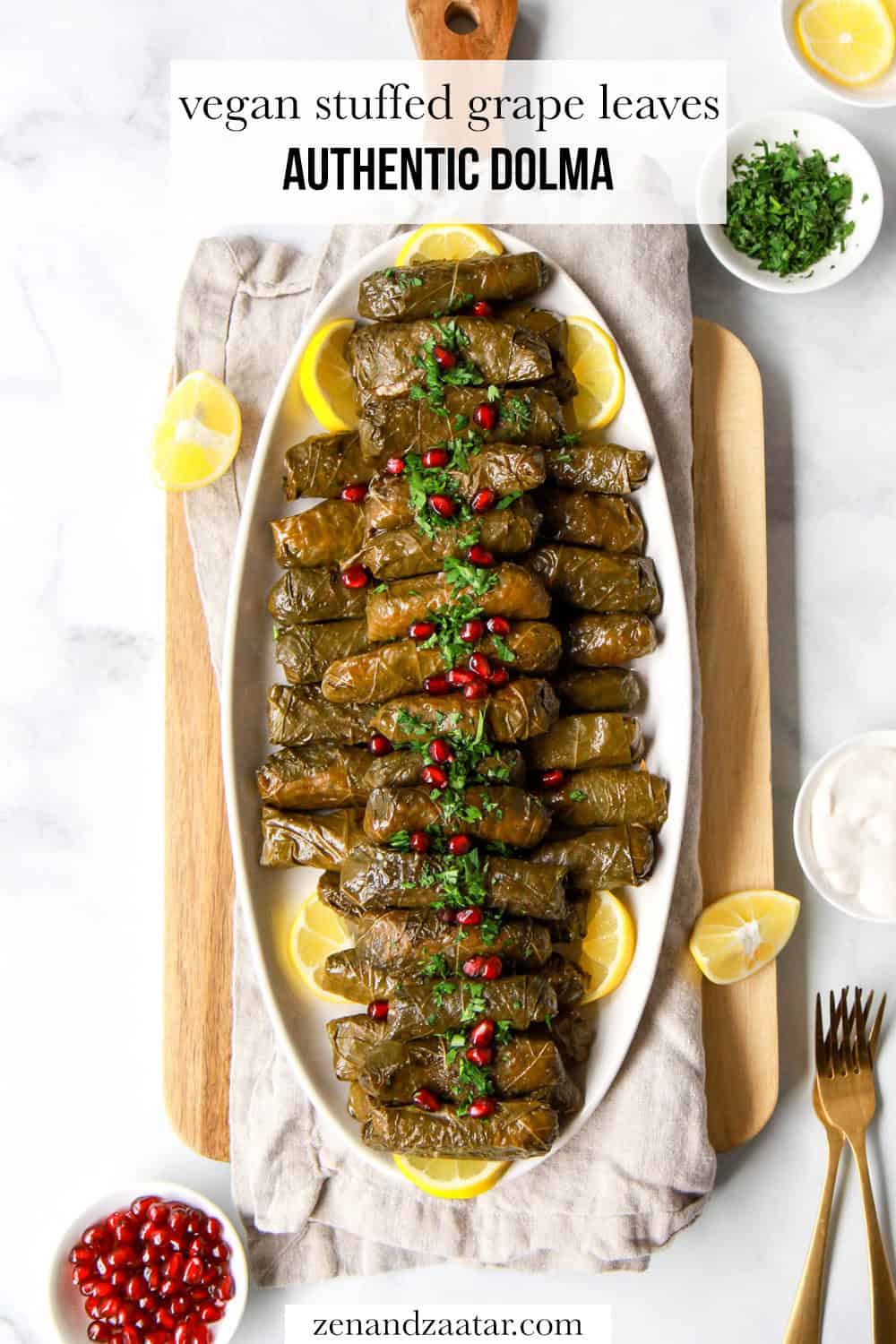
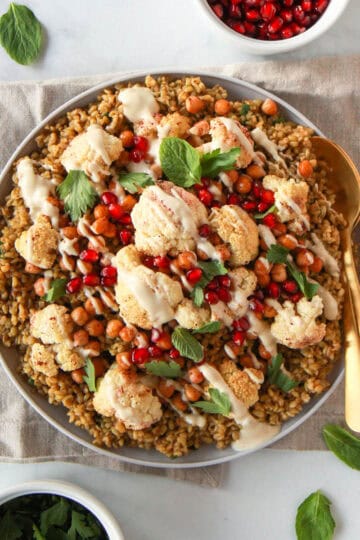

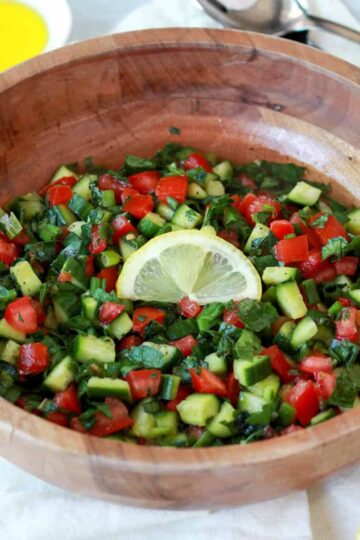
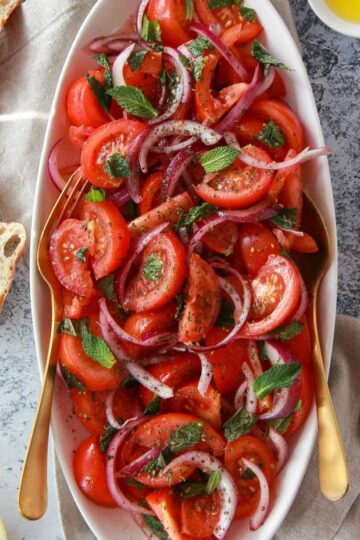
Mihaela says
Hi! I ve been doing dolma (we call them sarmale in Romania) for years but your way (the rolling) is better! I usually put the leaves in my hand and go from there. Your way is more time consuming, maybe because I lack the practice, for now :-p, but the result is better looking 🙂 Thanks!
SMK says
Is the 31/2 cups of rice precooked? Thanks.
Zena | Zen and Zaatar says
It is uncooked!
Al says
Was so fun to make as a family. Delicious recipe that reminded me of being back home.